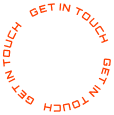Creating the Ideal 3D Artist Portfolio for the Video Game Industry

A well-crafted portfolio is essential for a 3D artist. It gives a proper vision of your artistic abilities and demonstrates your experience within the gaming industry. It is especially important when applying for the dream job — a standout portfolio is a big competitive advantage.
In this blog, we are going to share some key ideas and expertise to guide you through the process of creating a consistent and smooth portfolio and how to present it correctly to potential employers.
Storytelling for art portfolio
Defining Your Unique Style and Brand
Start by defining your unique style and brand. Identify your strengths and specialties as a 3D artist, whether it’s character modeling, environment design, or visual effects. Spend some time developing a consistent visual identity throughout your portfolio to let your audience see your distinctive style. Also, you can tailor your portfolio to the video game industry and the studios you’d like to work with by researching their art style and project requirements.
Curating Your Best Work
When selecting pieces for your portfolio, focus on quality over quantity. Choose your best work to demonstrate the versatility of art styles, genres, and subject matter. It’s best to include examples of your modeling, texturing, lighting, and rendering abilities. Provide clear descriptions and context for each piece, explaining the challenges you faced during creation.
Demonstrating Technical Proficiency
Technical proficiency is one of the most important elements of your success. To impress potential employers, your portfolio should demonstrate your skills. Highlight your mastery of industry-standard 3D software like Maya, 3ds Max, and ZBrush, as well as game engines like Unreal Engine and Unity. You can also showcase your understanding of game art fundamentals, such as topology, UV mapping, and texture baking as a part of the overall skill. Present your ability to optimize assets for game performance, as this is a crucial skill in game development.
Showing Your Creative Process
The creative process is always a matter of discussion. Give insight into your art development pipeline by including concept art, sketches, and wireframes alongside your final 3D assets. Talk about your problem-solving approaches, design decisions, and any challenges you faced during the project.

Preparing for Presentation
Leveraging Online Platforms and Networking
Once your portfolio is prepared, it’s time to increase visibility and connect with potential employers. Utilize industry-specific platforms like ArtStation and Behance to showcase your works and engage with the community. Take your chances and participate in various online challenges and events to improve your skills and recognition. You can easily make connections with other artists and studio representatives by attending some conferences and networking events near your area of living.
Tailoring Your Portfolio for Specific Job Applications
It is always nice to catch up on the topic. You can find a unique presentation approach by researching the company’s art style and previous projects. It will help to understand the possible expectations for your desired 3d artist position. Customize your portfolio with the found insights and highlight the most relevant skills and experiences. You can also include a targeted cover letter or introduction video to explain why you’re passionate about this particular job.
Crafting an Engaging Portfolio Presentation
When the showtime comes, keep the focus on your works and projects rather than portfolio design. Choose a clean, professional, and easy-to-navigate layout that will emphasize your art decisions. Also, use high-quality images and videos to ensure that your portfolio is optimized for various devices. And do not forget to regularly update your portfolio with your latest and most relevant works! That’s the best way to demonstrate your growth.

Let’s sum it up
In a nutshell, an outstanding 3D artist portfolio is a combination of unique style, best works, and technical proficiency. When tailoring these qualities for specific job applications, you can increase your chances of landing your dream job. With a strong portfolio and a dedication to your craft, you can turn your passion for 3D art into a rewarding career in the video game industry. At Studio 801, we’re always on the lookout for talented 3D artists to join our team. If you’re passionate about creating stunning art for video games, we encourage you to explore our website and check out our current job opportunities.
Here at Studio 801 we pride ourselves on our incredible cooperation with our partners and our community of artists. If you are a team or know a team that could make use of the support of an excellent studio, you can contact us via our website or email us via info@studio-801.com




